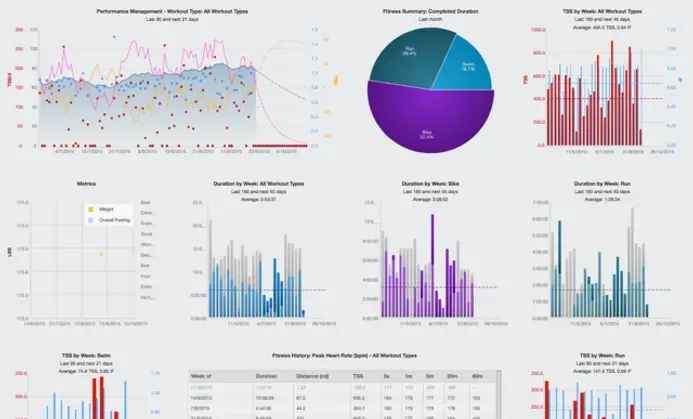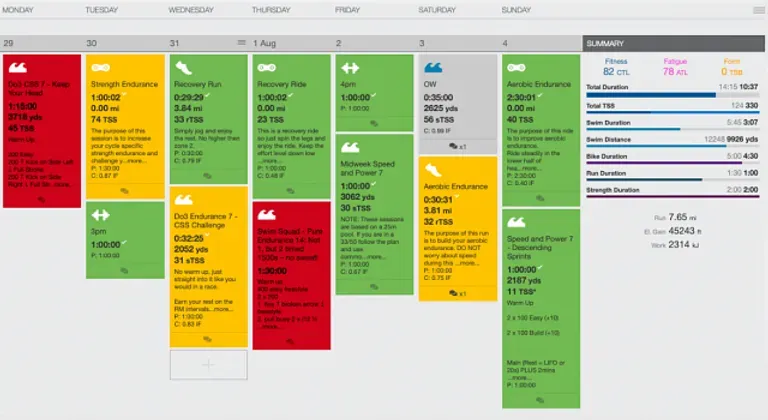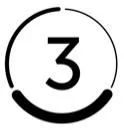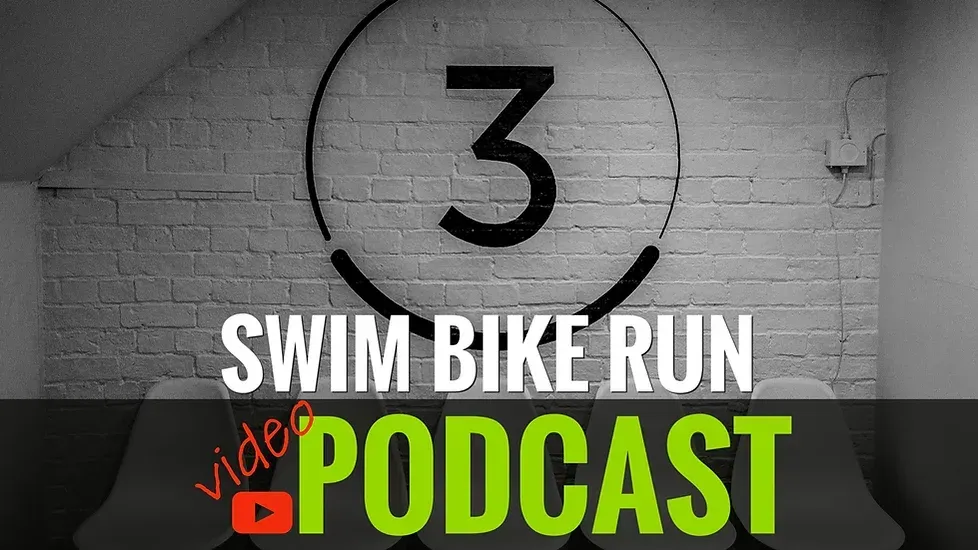When is the Best Time to Get a Bike Fit? Tips From Precision Cycle Fit, A Professional Bike Fitting Service in Warwickshire
Introduction
For our latest blog post, the topic regards a question that any cyclist who has considered a Bike Fit will have asked: When is the Best Time to Get a Bike Fit?
Whether you're an experienced cyclist or just starting your riding journey, understanding the importance of your position on the bike and when it’s best to investigate and change it is crucial to your enjoyment and success in our beautiful sport.
And if you're in or near Warwickshire, you're in luck – why not get in touch to discover how our professional bike fitting service can make all the difference to your cycling endeavors.
The Big Event

Imagine you’ve got a big event coming up. As you are a cyclist, it could be a cycling event, but it could be anything really. As long as it’s important to you: Booking a holiday, paying your tax bill, writing a blog post. Can you tell what has been occupying the author’s mind of late?
You know when all these things need to happen, and you’ve probably got a good idea of how much is involved in achieving them, especially if you’ve done it before. So, when do you start preparing?
Let’s look at the cycling event example. I’ve been racing bikes for nearly three decades so I know a few things about how I should prepare and here are two commonly experienced extremes of the preparation spectrum:
If things are normal, I’m basically fit and motivated:
o I can perform well with 8 weeks of training.
o If I want to do really well, I’ll need 12 weeks.
o But is more like 16 weeks for a big race with hopes of a Podium Place.
If things are abnormal, I’m unfit and / or I’ve just remembered I entered this race with plenty of time to prepare but for whatever reason, didn’t:
o 8 weeks might just get me through with a decent performance.
o I can probably get through it with zero training but it’s gonna hurt a lot. And I won’t be troubling the Podium.
So, when do I start training? Well in my serious racing days, I’d give it the full 16 weeks. But nowadays I suffer increasingly from CBB (Can’t Be Bothered) syndrome, so I know that realistically, 8-10 weeks is the most I’m going to manage effectively. Any less and I’ll be under-trained but motivated. Any more I’ll be mentally over it, I might have peaked early, and it’s likely the race has become a burden.
So, returning to the topic; When is the Best Time to Get a Bike Fit?
The Best Time to Get a Bike Fit - Most Cyclists

I can answer most cycling questions with three stock answers:
1. As Soon As Possible.
2. It Depends.
3. Maybe.
Option 3 is not a suitable answer to this question. So, should you err more towards the ‘As Soon As Possible’ or the ‘It Depends’ option?
Unlike my race analogy above where the best answer is ‘It Depends’, for a Bike Fit, the best answer is almost always ‘As Soon As Possible’ because the likelihood of a Bike Fit being too soon for most people is very low and the associated risk is similarly low.
If you’ve read my website or other articles, you’ll know that there is no ‘Single Bike Fit Position’. The best any bike fitter can do is to put you in the optimum position there and then. What a good bike fitter will try and do is to determine your ‘Bike Fit Window’ and position you appropriately within it based on what you want to achieve, where you are in relation to that achievement and the data and observations gathered during the session.
When I write my Client Bike Fit Report, I will always provide some ‘Simple Recommendations’ to allow riders to be confident to make small future changes, and in which direction to make them.
For example, the report might say something like:
Saddle Height: 735mm. Simple Recommendation: 5-10mm higher, but no lower. Or:
Stem Length: 100mm. Simple Recommendation: 90mm, but no shorter etc…
Thus, should the rider feel they want to tweak things in response to normal changes such as warmer weather (see my blog on Winter Bike Fit here), improved fitness, flexibility etc, riders are empowered to try things themselves at low risk. And of course, if this doesn’t work or more advice is required, they are always welcome to pick up the phone and talk things through.
For most cyclists, the answer to the question “When is the Best Time to Get a Bike Fit” is: "As Soon As Possible".
But there are ‘It Depends’ considerations as well, which are most likely associated with a specific stretch-objective like a particular race result or important event. Or a new bike!
The Best Time to Get a Bike Fit – Racers (For a Normal UK Race Season March to Aug)

Everyone wants to start the new race season in top form:
The best way to ensure you are in top form for the Race Season is to get your Bike Fit conducted as early in the Off Season as possible
September
Let’s say the race season finished at the end of August / start of September. At this point, you are likely to be all the above things.
You’re also likely to be ready to put the bike away and forget about it for a while. Now is the time for beer, cake and friends.
But, if you can face it, why not consider having a Bike Fit as the last thing you do in the race season? Because the longer you leave it, the further away from this condition you will become.
October
After a month or so, you are probably ready to pick up the bike again. You’ll still be fit and strong, but not as much as you were, and likely a bit less flexible. This would still be an excellent time to get your Bike Fit conducted.
October might be the optimal time for non-professional cyclists to have a Bike Fit, when real world considerations are taken into account.
For example, you may have ended the season with some injuries and niggles that you need to recover from. Also don’t discount the mental element: If you just want the season to end now, getting a Bike Fit when you ‘CBB’ is not going to yield the best result.
October is also the time when people start to motivate themselves by buying some shiny new kit. So, if you finish your race season knowing a new bike is on its way, there is no point getting fitted until you have that in your possession. It’s the same but to a lesser degree if you are going to change your shoes, skinsuit or aero helmet.
At this time of year, you might even be able to get out and ride this position on the road, not just indoors on the Turbo Trainer, so if you can, getting a Bike Fit in October is a very good idea.
November
So, you’ve just missed the peak window, but it’s still better than delaying it any further, and this is a popular time for many riders. The weather is now probably unsuited to riding your race bike outside, especially if it is a TT bike. But the way a lot of people train over winter now, using indoor trainers with race simulations, does mean you can get a lot of meaningful riding done in your new position, providing plenty of adaptation and familiarization time.
Don’t forget that riding inside is not the same as riding on the road though. You don’t need to look ahead, and you don’t need to go around corners, up hills or deal with side winds and other vehicles. So, whilst you might be comfortable and, more importantly, confident knocking out 300W indoors with your new super-aero, super-narrow bar position, that doesn’t mean you are ready to unleash it in anger on the road (ask me how I know this...and 300W is a dream for me nowadays)!
December
Same as November really, with the added pressure that you’ll have family commitments over the festive period and all your money will have been spent on presents, or if you are newly self-employed, the Tax Man.
Justifying the cost of a Bike Fit to your partner at this time might be tricky! Or it could be a handy Christmas Present idea.
January
The time when all serious athletes must avoid the gym and swimming pool as it’s filled with good intentioned ‘new athletes’. Personally, I never start making any new year assertions, or even start training until at least the second or third week of this month to avoid excess undue pressure and potential failure. Just getting through normal life at this time of the year can be hard enough
But it is important to start thinking, even if it’s not actual planning or doing. Most everyone else will be feeling / doing the same thing and bike fitting appointments for February, March and beyond will be filling quickly.
February
You should now be consistently knocking out the base miles on the road, but most likely on your winter bike, which should have a different Bike Fit to your race bike (if you missed it the first time, see my blog on Winter Bike Fit: here). Winter riding is one of my favorite types of riding; When it’s just you and your bike battling the elements. Especially if you’ve fitted mudguards!
The positives of getting a Bike Fit now are that your body will be well adapted back into the riding position and its associated stresses and strains. The downside is you will probably be less flexible, unless you have followed coaches’ instructions to do ‘strength and flexibility conditioning over winter’. What do you mean you thought this was an optional suggestion?
This is where the importance of your Bike Fitter understanding your Bike Fit Window bears out, with suggestions such as “When you can stand and touch the floor without your tendons snapping, that is the time you can lower your stem height by 5mm. 5mm only mind. Not 10mm”.
March
Race season is nearly upon us. In fact, for some, it’s already started. If you get a Bike Fit now, you won’t have weeks and weeks of being able to acclimatize to it indoors, but on the plus side, you’ll have plenty of miles in your legs and decent flexibility, not too compromised by cold weather and thick winter clothing.
Also, you’ll be more likely to be able to ride on the open road so ‘real adaptation’ will occur more quickly. What I mean by this is not just the standard biomechanics of riding, but also riding in an environment with noise factors such as bumpy roads, changeable weather, and traffic.
March is an excellent time to get a bike fit for many reasons, which means it’s also a popular time so get booked in quickly!
The Race Season

April - September
Racing has definitely started now so you need to think about medium to long term gain vs short term pain.
If you get a Bike Fit now, you need to accept that you’ll be doing some races in an unfamiliar position. Initially this may compromise your performance, but it’s an investment for the future. At this stage, you’re probably only looking at an adaptation time of 2 to 3 weeks if you ride in that position regularly, so all is not lost.
Most Bike Fitters have their busiest periods between March and July as riders react to their goal, not plan for it.
This is fine, you’ll still get meaningful advantages, but don’t have a Bike Fit less than 4 weeks prior your major race or event of the season, unless something significant has happened in the lead up to it.
Conclusion
For most cyclists, the answer to the question “When is the Best Time to Get a Bike Fit is:
For racing cyclists, or those with a specific big goal, the answer to the same question is:
…with the probable answer being:
…and the important caveat:
Please do get in touch if you have any questions or would like to make a booking at Precision Cycle Fit, A Professional Bike Fitting Service in Warwickshire.
Thanks, Matt






















